
For the pantheras:
| Himalayan salt | 1/2 teaspoon |
|---|---|
| Water (to soak) | 5 cups |
| Cold-pressed vegetable oil | 2 tablespoons |
| Egg | 1 |
| Urad dal (soaked for at least six hours, or overnight) | 1/4 cup |
| Barnyard millet (soaked for at least six hours, or overnight) | 1 cup |
For the keema filling:
| Himalayan salt | to taste |
|---|---|
| Mustard oil | 2 tablespoons |
| Sugar | ½ teaspoon |
| Turmeric powder | ½ teaspoon |
| Kashmiri red chilli powder | 1 teaspoon |
| Whole black peppercorns | 1 teaspoon |
| Cumin seeds | 1 teaspoon |
| Coriander seeds | 2 teaspoons |
| Cinnamon stick | 2 inches |
| Green cardamom pods | 2 |
| Cloves | 4 |
| Bay leaves | 2 |
| Green chillies | 4 |
| Coriander leaves (finely chopped) | 2 sprigs |
| Ginger (grated) | 1 teaspoon |
| Garlic (grated) | 1 tablespoon |
| Onion (medium, finely chopped) | 2 |
| Egg | 1 |
| Minced mutton (keema) | 2 cups or 500 grams |
For the aam kasundi (Raw Mango Mustard Sauce)
| Vinegar | 2 tablespoons |
|---|---|
| Mustard Oil | 1/2 cup + 1 tablespoon |
| Garlic cloves | 3-4 |
| Sugar | 3-4 |
| Salt | 2 teaspoons |
| Green chillies | 4-5 |
| Turmeric powder | 1 teaspoon |
| Black mustard seeds | 2 tablespoons |
| Yellow mustard seeds | 2 tablespoons |
| Raw mango (shredded) | 2 cups |
What You Will Need
One mixing bowl, a cast-iron or non-stick frying pan, cast iron kadhai or wok with a cover, a spatula, a mixer-grinder, a pastry brush, a vegetable knife, a grater, a ladle, a bowl of water, a cotton cloth.
Instructions
For the Mutton Pantheras, wash the barnyard millet and urad dal thoroughly. Soak separately in water for at least six hours, or overnight.
Drain both, the dal and the millet. Pulse them separately to a smooth paste using a mixer-grinder. Add water gradually while grinding.
After making the millet and lentil paste, mix both together to make a batter, and add salt to taste. The consistency of the final batter should be neither thick nor thin. Keep this batter aside.
Marinate the keema with a quarter cup of water, a teaspoon of salt, and turmeric powder. Keep aside.
Finely chop the onions, green chillies, and coriander leaves (along with their stems).
Heat two tablespoons of mustard oil in a kadhai or wok. Add sugar to the hot oil, then add in the bay leaves and onions. Sauté the onions on a medium flame until they are caramelised, and turn a light brown colour.
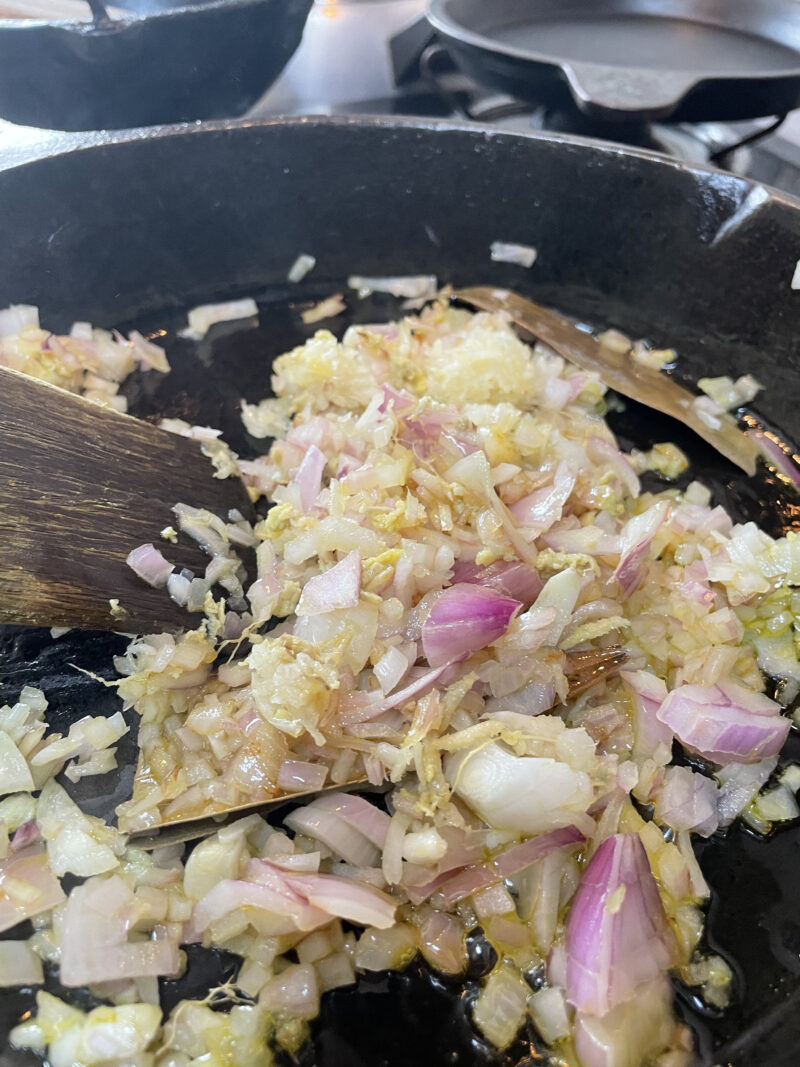
Add the grated ginger and garlic to the onions.
Add a small quantity of water to the roasted spice powder to make a paste, then add this paste to the kadhai along with the red chilli powder. Sauté until oil starts to release from this mix.
Add the keema to the kadhai at this point, and cook on a high flame for three to five minutes.
Reduce the flame to low, and cover the mixture with a lid. Cook for 15 to 20 minutes, until the meat is tender, and all the liquid from the meat has evaporated completely. Stir occasionally to prevent the meat from sticking to the bottom of the kadhai.
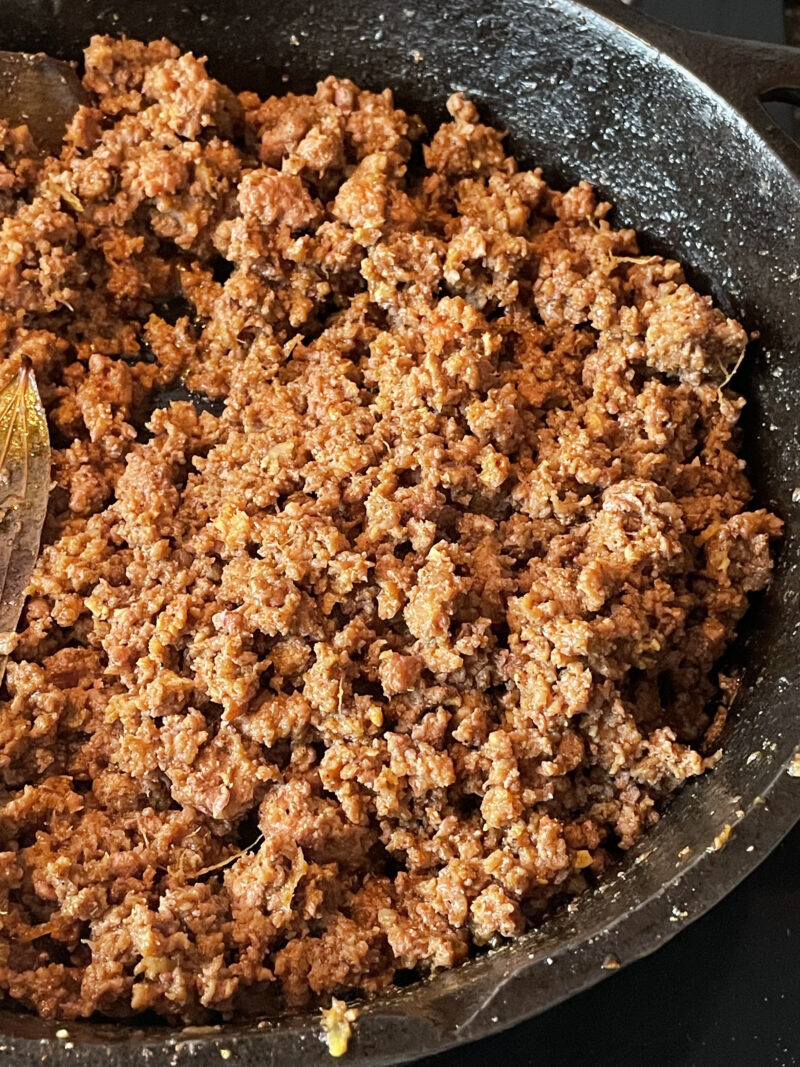
Turn off the heat and remove the bay leaves. Check the mixture for salt.
Let the keema cool down completely, then move it to a mixing bowl.
Add an egg to the keema mixture, then mix in coriander leaves and green chillies. Mix well.
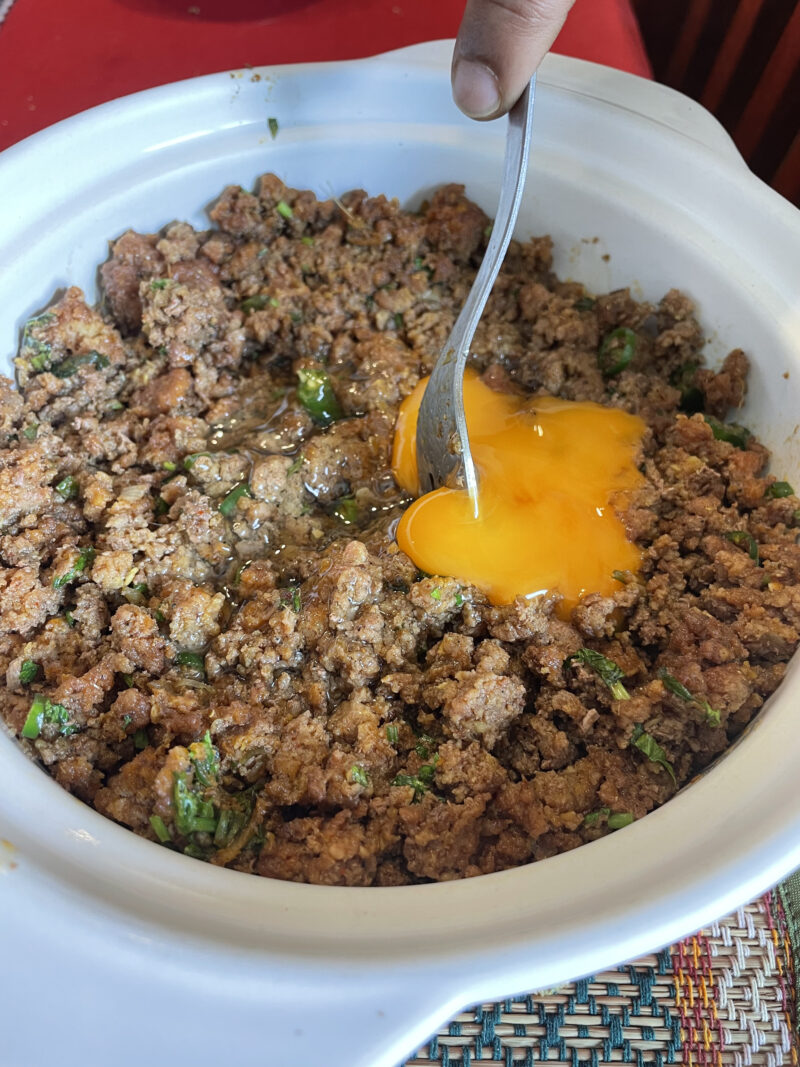
Whisk an egg and add it to the millet-urad dal batter. The batter shouldn’t be too thick or runny in consistency.
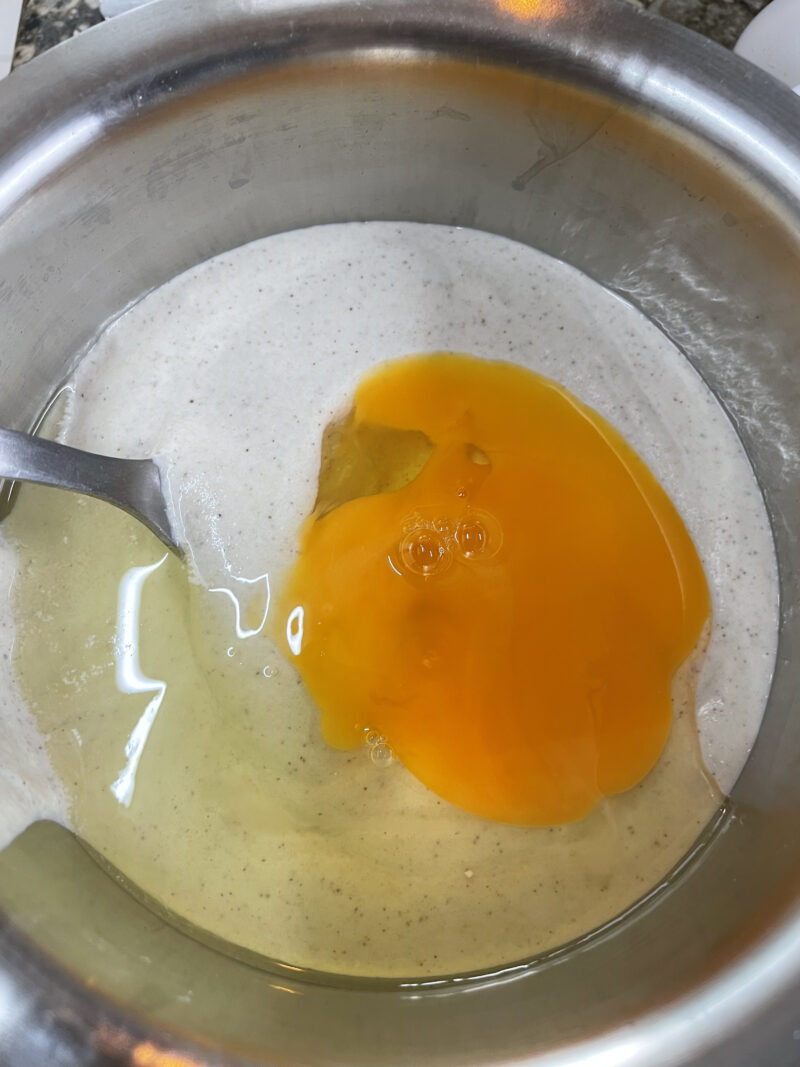
Add more water, if required, since the batter tends to become thicker once it has rested. Stir the batter well before making each crepe.
Heat a frying pan on a medium high flame. Brush vegetable oil on the surface of the pan and then wipe it off with a damp cotton cloth.
Drop a ladle of batter on the frying pan. Spread the batter in a thin, circular layer with the back of the ladle to form the crepe. Apply some oil with a brush on the periphery of the crepe.

Flip it once the bottom of the crepe is cooked, but has not yet changed colour too evidently
Add one to two tablespoons of the keema filling to the centre of the cooked side of the crepe.

Bring two sides of the crepe over the filling and overlap them. Stick them together with a little batter, which will act as a glue. Then fold the remaining two sides to make a rectangular parcel. Stick them with batter as well.
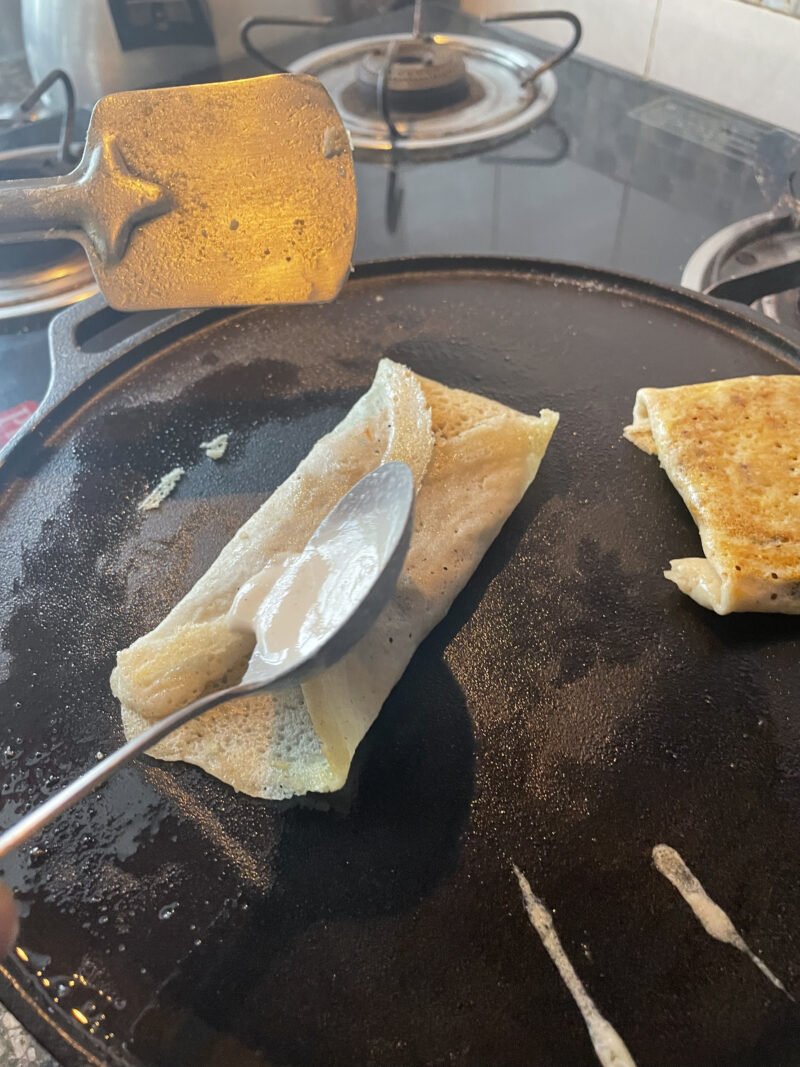
Flip the parcel with the help of a spatula.
Brush this side of the parcel with oil, then press down with the spatula. This helps in browning and making the pantheras crisp.
Cook each side of the folded pantheras on a low flame for approximately three to four minutes till both sides turn semi-crisp, but do not brown too much.
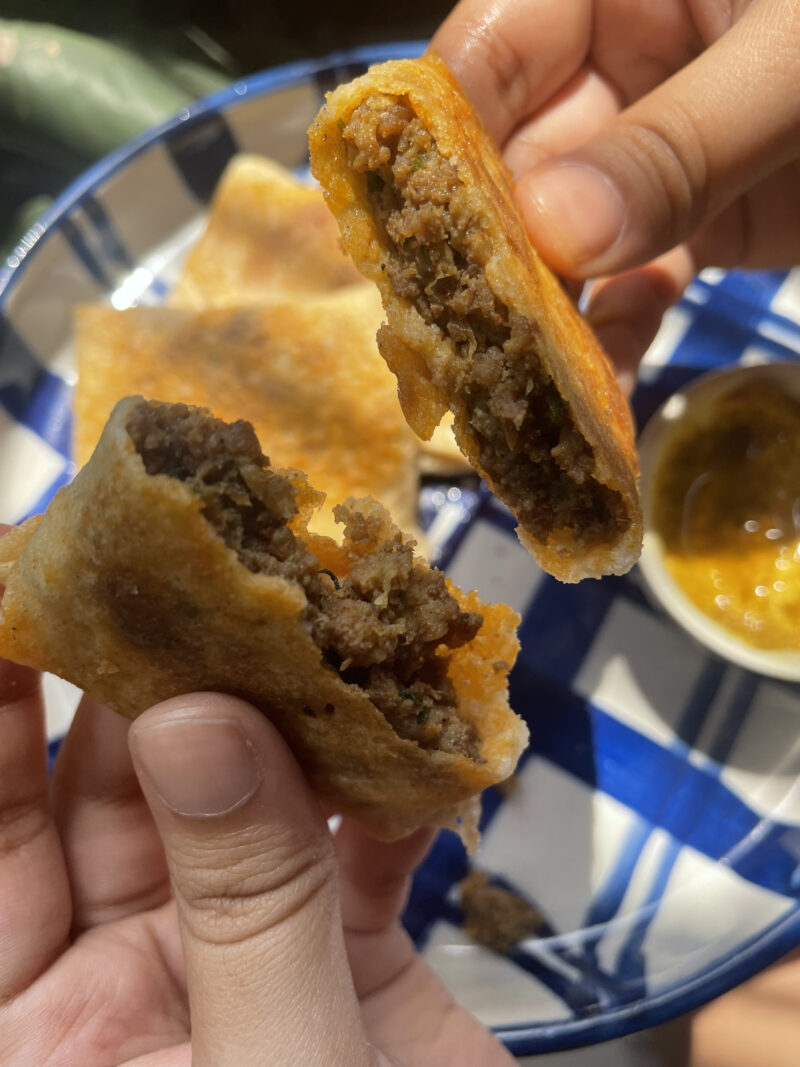
Wipe the frying pan with the damp cloth and repeat steps 18 through 24 for the rest of the batter.
For the Aam Kasundi, add one tablespoon of salt to the grated raw mango and keep this mixture aside for ten minutes to sweat the mango.
Squeeze out all the water from the grated mango.
Add the yellow mustard, black mustard, green chillies, and salt to the mixer-grinder jar.

Pulse the mixture until it is the consistency of a coarsely ground paste.
Now add the squeezed raw mango, turmeric, sugar, mustard oil, and vinegar to this paste, and blend again to form a smooth paste.

Top the kasundi with a tablespoon of mustard oil and keep in the sun to mature for three to four days.
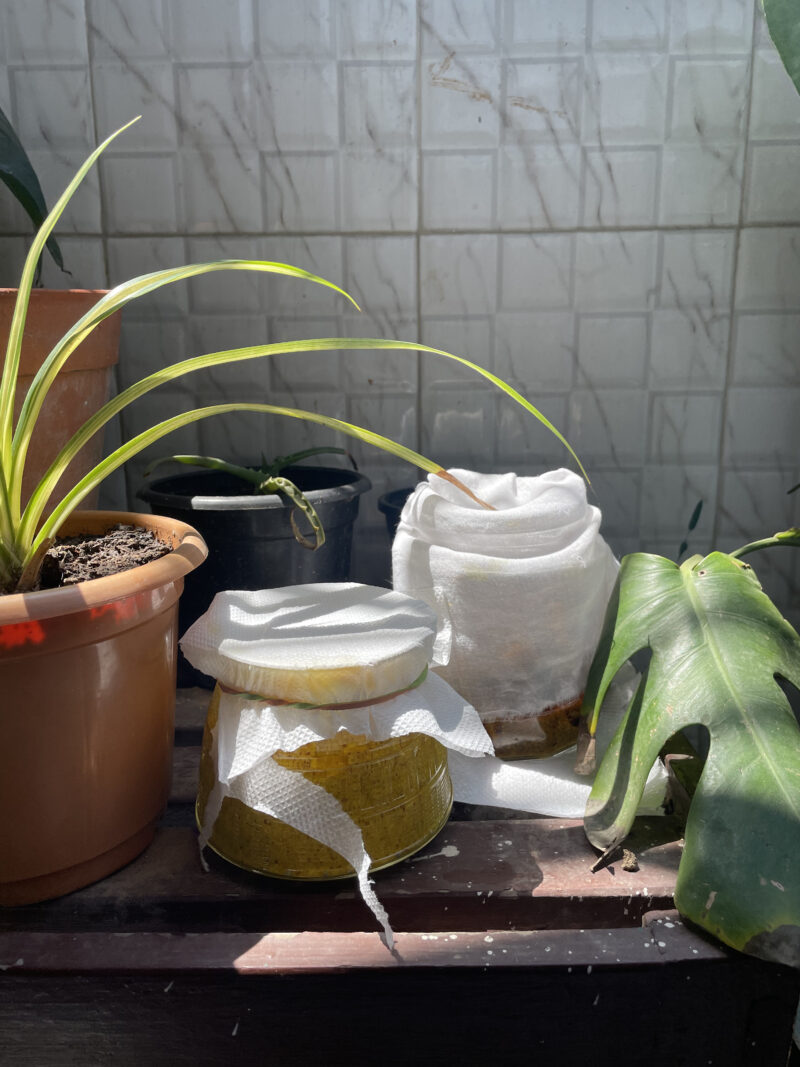
Tips:
- Season the frying pan before making the crepes so that they don’t stick to the bottom of the pan.
- If the frying-pan is large enough, begin making a crepe while folding and cooking one or more pantheras on the side.
- If you want the mutton filling to be spicier, add a few more chillies to the mixture.
- Water your plants with the water used to soak the barnyard millet.
Variations:
- The pantheras can be filled with fish, chicken, beef, pork, prawns, egg, coconut, green peas or paneer.
- The pantheras can also be served with a wild honey kasundi.
Swati Bhaduri is a home chef based out of Kolkata, West Bengal. An ex-banker turned chef, Swati is the Mama behind the cloud kitchen brand Mama Bear.
Having grown up in Uttar Pradesh and lived in different parts of India (from Jharkhand to Gujarat to West Bengal), she has incorporated a love for local cuisine into her culinary journey, as well as a strong belief in sustainable nutrition.
She knows micro-level actions go a long way in spearheading larger trends, and sharing her millet stories and recipes with The Millet Revival Project is her way of creating awareness about the vanishing grain.
You must be logged in to rate this recipe.

Sign in with email

 Roast the dry spices (not including the bay leaves), on a low flame for two to three minutes. After they cool down, dry grind them using a mixer-grinder or a mortar and pestle.
Roast the dry spices (not including the bay leaves), on a low flame for two to three minutes. After they cool down, dry grind them using a mixer-grinder or a mortar and pestle.